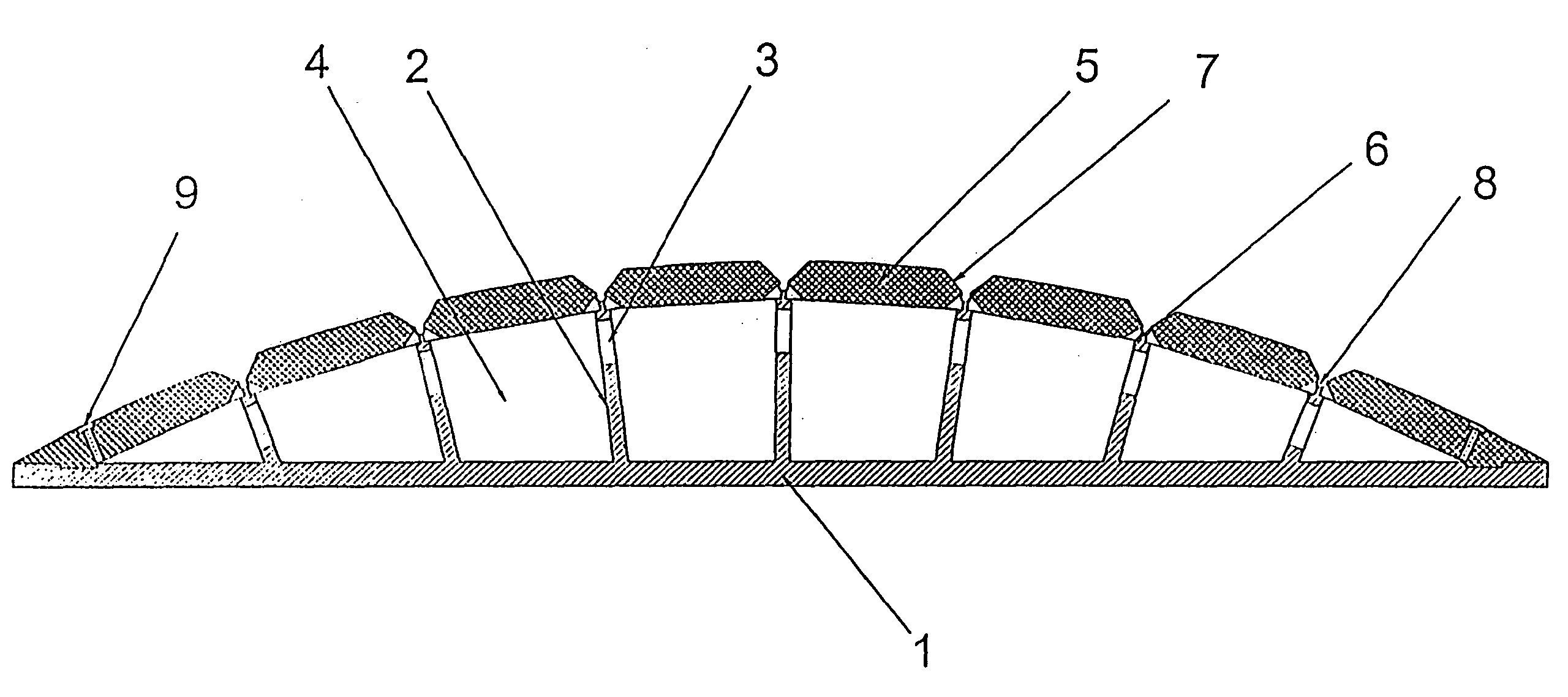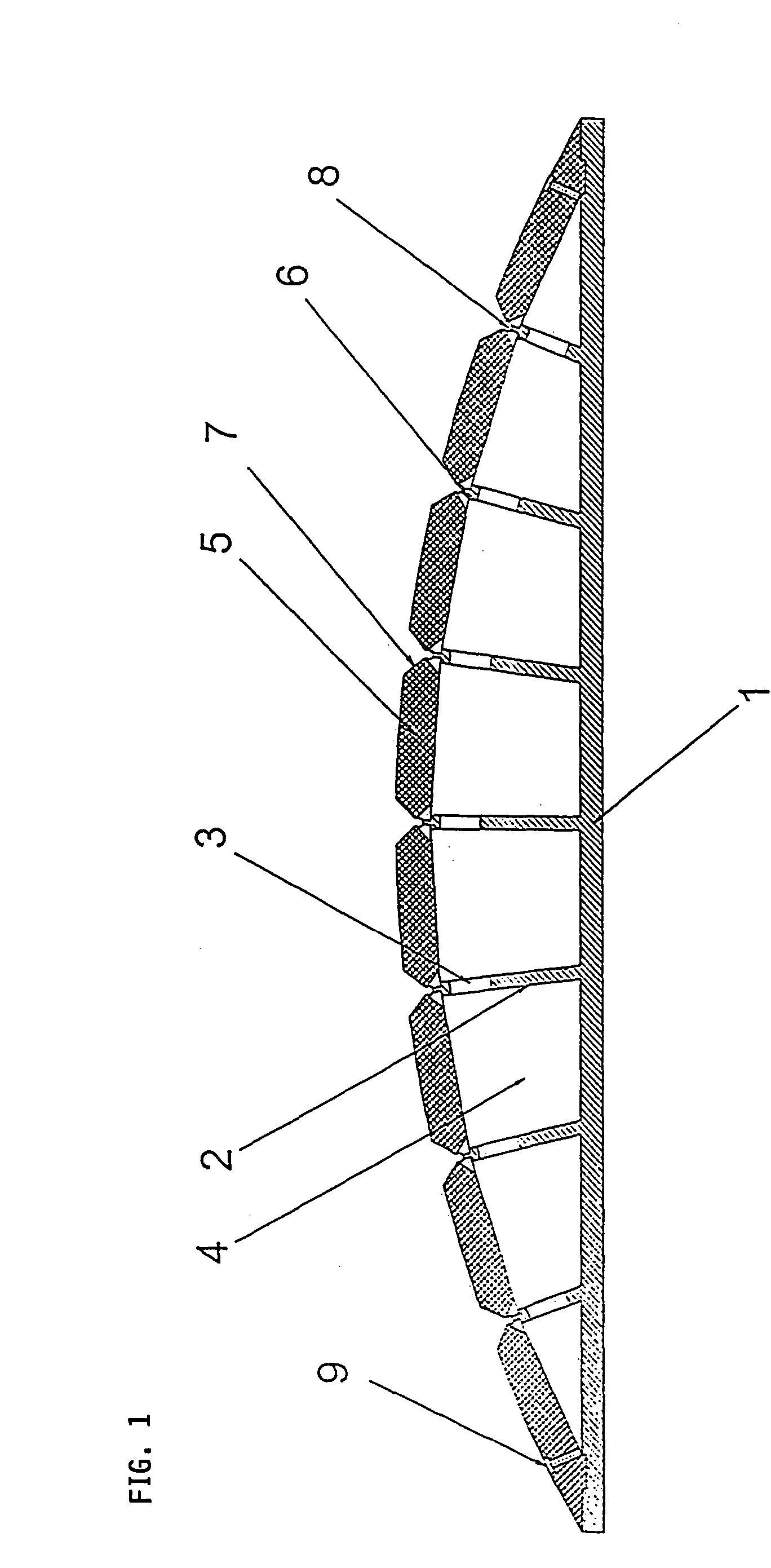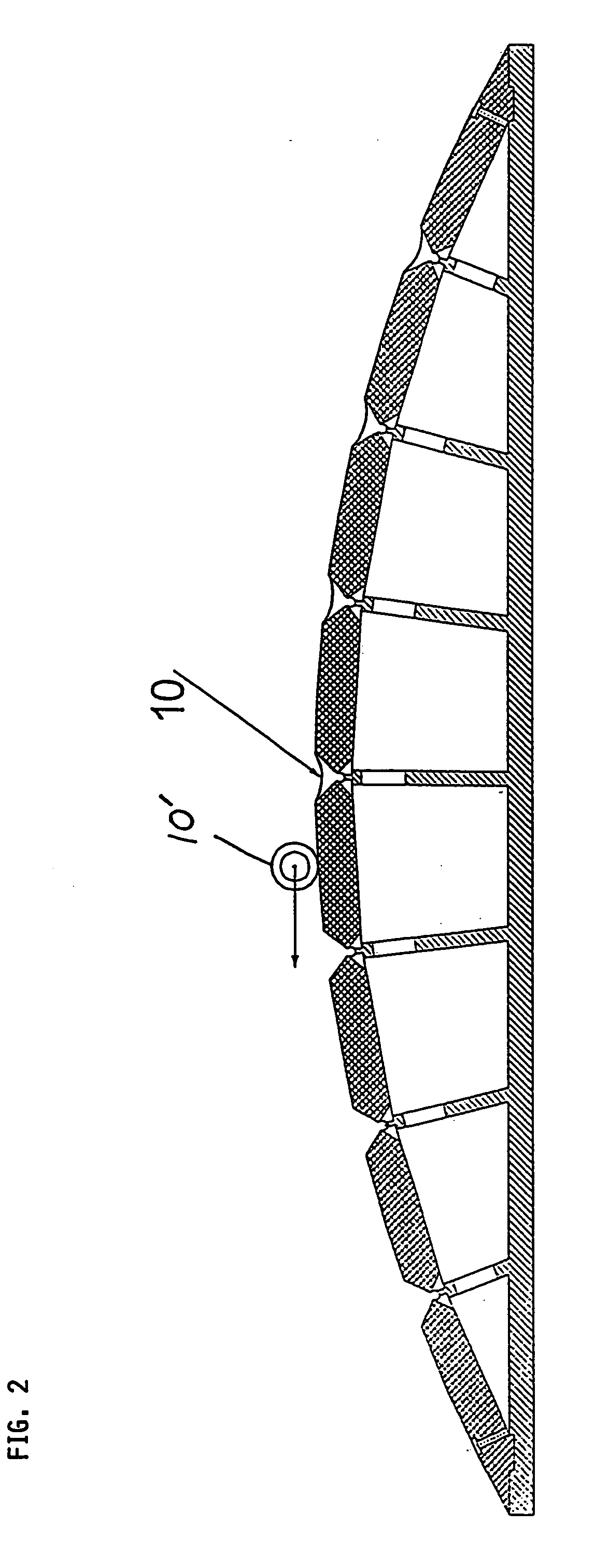Automated fabrication of an integral fiber reinforced composite structural component using a positioning and assembly support
a technology of positioning and assembly support and composite structural components, which is applied in the direction of process and machine control, mechanical control devices, instruments, etc., can solve the problems of increasing the rejection rate, and affecting the quality of the produ
- Summary
- Abstract
- Description
- Claims
- Application Information
AI Technical Summary
Benefits of technology
Problems solved by technology
Method used
Image
Examples
Embodiment Construction
[0028] The forming jig or positioning and assembly support shown in FIG. 1 includes a flat planar and elongated support base 1 that is solid and vacuum-tight all the way out to its lateral edges. A plurality of supporting walls 2 (e.g. in the present example seven supporting walls 2) of respective different lengths or protruding heights from the support base 1 are arranged and secured on the support base 1 so as to protrude generally upwardly therefrom while forming a grid of the walls 2 on the base 1. The support base 1 and the support walls 2 are made of metal, for example a light metal or metal alloy, and the support walls 2 may be welded onto the support base 1, for example. The upper free ends of the support walls 2 all lie on a curved or arcuate imaginary surface that generally corresponds to the curvature of the structural component that is to be fabricated. The respective support walls 2 each protrude respectively at a different angle from the support base 1, whereby this an...
PUM
| Property | Measurement | Unit |
|---|---|---|
| Angle | aaaaa | aaaaa |
| Dimension | aaaaa | aaaaa |
| Vacuum | aaaaa | aaaaa |
Abstract
Description
Claims
Application Information
 Login to View More
Login to View More - R&D
- Intellectual Property
- Life Sciences
- Materials
- Tech Scout
- Unparalleled Data Quality
- Higher Quality Content
- 60% Fewer Hallucinations
Browse by: Latest US Patents, China's latest patents, Technical Efficacy Thesaurus, Application Domain, Technology Topic, Popular Technical Reports.
© 2025 PatSnap. All rights reserved.Legal|Privacy policy|Modern Slavery Act Transparency Statement|Sitemap|About US| Contact US: help@patsnap.com



